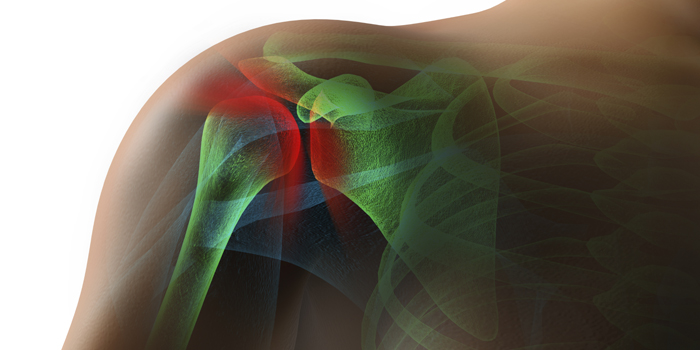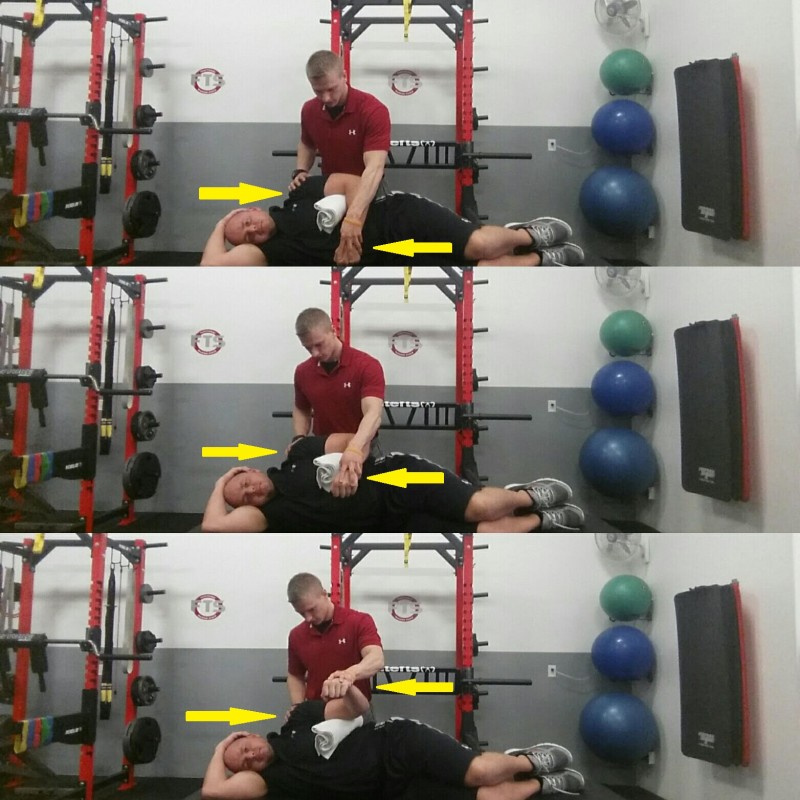I have the privilege to work with some of the finest strength training professionals around. Finding one is key to starting with good habits when learning an exercise program if your intention is to achieve fitness goals like improved strength, conditioning, performance, nutrition, wellness, and injury recovery. A true professional trainer should be meticulous about your goals, aware of your injuries and concerns, consider your age, level of conditioning and body awareness. There should always be a sense of working from a stable center or “core” through awareness of position and breathing even if you are working away from the core. My friend and fitness professional Brian LeRiche has written an article about considerations for achieving shoulder strengthening goals for the rotator cuff. This article is a great example of what elite fitness professionals consider when helping their clients achieve their fitness and wellness goals.
Sensory Awareness: Rotator Cuff Activation

Most of the general public understands the importance of rotator cuff strength. Similarly, many people are aware of what the rotator cuff is and the important role it has on the glenohumeral joint. Most are familiar with the concepts of it being an internal/external rotator (ER/IR) and dynamic stabilizer of the shoulder. However, training can sometimes stray from the desired outcome and lead to improper learned mechanics and behaviors.
To help combat this issue, listed below are my top four coaching methods for a side lying manually resisted ER/IR to promote dynamic stability through development and comprehension of overall sensory awareness using optimal neuromuscular patterns. This can help athletes and lifters of all kinds in promoting stronger, safer movement in the shoulder.
1. Establish correct glenohumeral scapulo-thoracic relationship.
Position must be established prior to rotator cuff activation. Think of a bent hinge on a door: the door hinge still has the ability to move, although it may be forced, further bent, or actually broken in order to close. Point being, the door will shut if it truly needs to. Our shoulder joint can be represented as the hinge on the door and the relentless effort to always get from point A to point B, no matter the consequences. However, improper position, like the bent hinge, results in forced compensations that will further strengthen your dysfunction. Looking at the door, the incorrect position leads to a further bent or a broken hinge. The poor position at the shoulder can cause impingement or acute/chronic structural variations. As a result of the compensatory motions of external and internal resistance, a neuromuscular disconnection occurs with an increased risk of injury. Look to establish a neutral thorax in order to achieve a balanced glenohumeral joint through oblique activation. The activation of the obliques allows for rib depression, diaphragm improvement, and a better relationship between the glenoid and the humerus. Once this position is optimized, the proper amount of stimulus can be received, utilized, and strengthened by the correct muscles of the rotator cuff.
2. Inhibit wrist extensors.
The typical corporate job setting comes with a pair of over active and over developed wrists. Specifically, the wrist extensors contribute to the human body’s natural pattern of extension based compensation. The brain begins to use the extensors as a means of compensation for shoulder external/internal motion. However, providing active feedback to the brain will assist in proper muscle engagement. To coach this, place your hand on the client’s wrist throughout the range of ER/IR acting as the sensory paradigm. Your hand is used as a sensory cue and is not to force, push, or pull the clients hand to cause further compensation. Place the wrist in a state of slight flexion to inhibit the extensors. A decrease in neck tone may be observed as a result of the slightly flexed wrist. Next, ask the client/athlete to imagine their arm weighs 500 pounds and a steel rod that is immobile from the wrist to the shoulder. This produces a much slower, more thought out movement to facilitate the appropriate fibers at the onset of the exercise. More importantly, it helps establish the neuromuscular non-compensatory connection of ER/IR. Let the shoulder rotate the wrist, not the wrist rotate the shoulder.
3. Sustain tension in the correct place.
This sounds simple enough, but many people struggle with this concept. This is where manual resistance can be far superior when training/coaching the ER/IR rotators versus bands, cables, or dumbbells. Manual resistance allows you to directly feel which muscles are firing and to connect at a biomechanical level. The created sensory information allows decreased activation of common compensation points such as the anterior deltoid, long head of the biceps, and the neck. Once external resistance is initiated, the proper muscles should be turned on and sustained. The transition time period in between external/internal motion creates the greatest risk of accessory muscle compensation. If tension is lost, our bodies will look elsewhere for stability. Our bodies crave stability and need to have a sense of feeling stable. When tension and stability is lost, it is created at the main compensation points as noted above. Learning how to sustain the appropriate amount of tension allows for proper exercise execution.
4. Don’t force motion.
Lastly, manual resistance provides great feedback for the sympathetically driven client. These are the clients that force motion with any possible muscle/joint that is willing to help. Although these types of clients may be fun to train with higher energy and motivation, they yield a high compensation rate. With manual resistance, force can be dissipated as the muscle fatigues. The fatigued muscle is going to be biased to look elsewhere for stability. A quick fix of decreasing tension allows the client to remain calm and appropriately sustain the correct fiber recruitment. The fine-tuned adjustment of tension to the clients threshold allows stability to be maintained without the need to look else where. Conversely, force can be increased if not enough recruitment is felt by the external rotators. This will allow clients to develop a sense of force that is required for the given muscle when demands may be low. The brain will begin to comprehend the correct amount of force that is required for a given task, which will substantially decrease the chance of injury. Furthermore, learning to the utilize force like a dimmer switch on a light will help lead to correct stabilizing and power development to increase performance.
MORE: Powerful (Yet Healthy) Boulder Shoulder Training
In summary, rotator cuff exercises are important, useful, and extremely beneficial when these four points are taken into account. Keep in mind, establishing position should be the primary goal. Once position is established and maintained, look to perceive a neuromuscular change to create a new pattern. Utilize the new pattern to add endurance, strength, and stabilization to the dynamic role of the rotator cuff.
Brian is an up-and-coming strength and conditioning coach. He is the owner of Functional Training Studio in Charlotte, North Carolina. At a young age, Brian has been training clients for over six years and is always looking at ways to improve his technique. He utilizes positional asymmetries that exist within the body to help clients and athletes improve their function and overall performance capacity. Brian has a degree in exercise science and is a certified strength and conditioning coach through the NSCA. Additionally, he plans to continue his education in 2017 in a doctorate of physical therapy program. For additional questions, Brian can be reached at FTStudio130@gmail.com.






